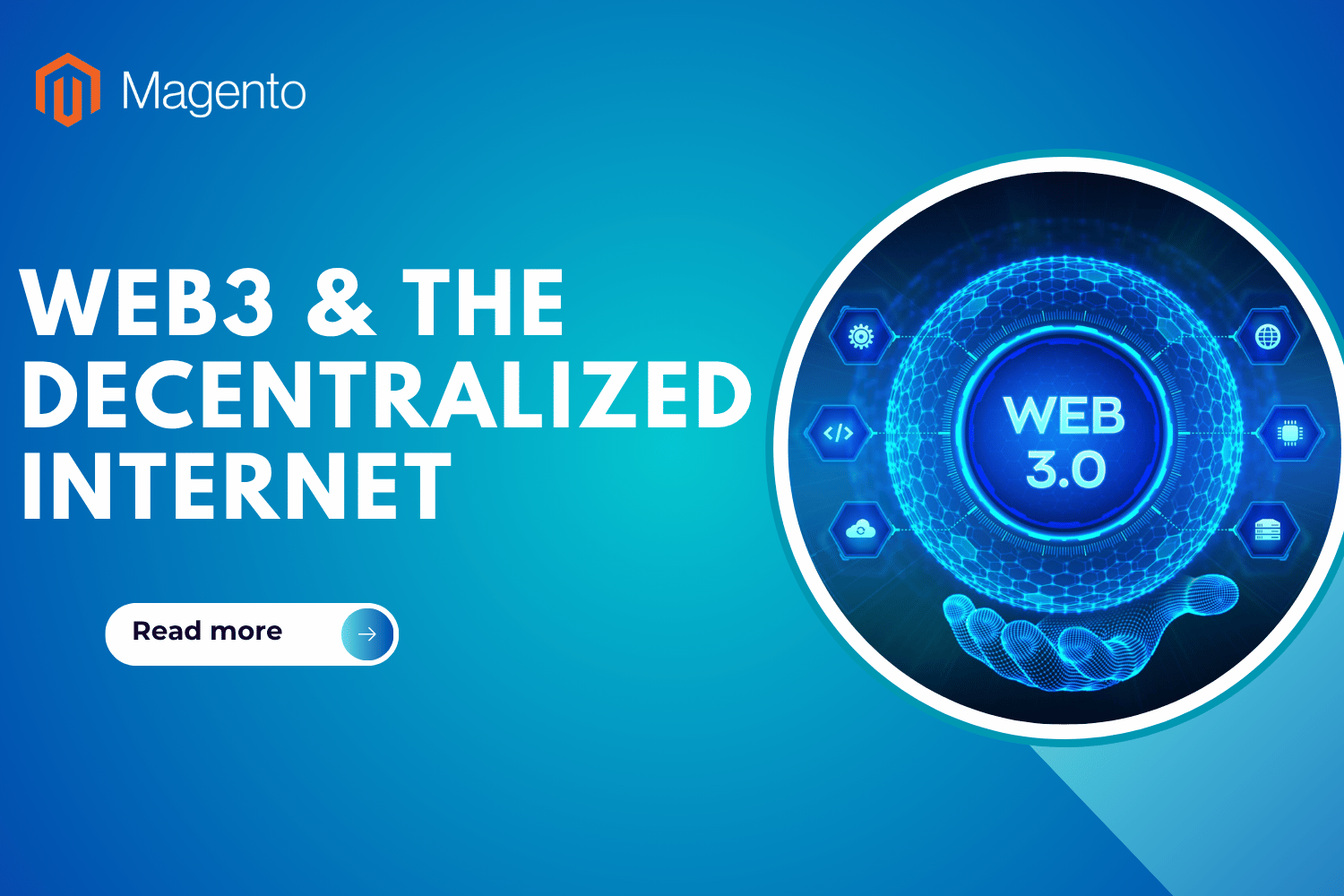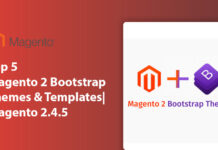
Do you remember when the internet was all dial-up noises and static websites? How times have changed. Now we’re moving into a time where users own information, code substitutes for contracts, and trust is built in. This is the decentralized internet. And Web3 is the blueprint.
For programmers, this is not a future trend. It’s a significant change in how we build. Understanding the decentralized internet and becoming comfortable with transferring your skill set might continue to put you ahead of the curve in the next few years. If you’re a developer wondering how to navigate this shift, this post is for you. It covers real blockchain use cases and platforms worth your time. MarketsandMarkets forecasts explosive growth for Web3, with the market set to skyrocket from $0.4 billion in 2023 to $5.5 billion by 2030—expanding at a staggering 44.9% annual rate. Let’s take a closer look at what this means for you.
Table of Contents
I. Introduction to Web3
Web3 is the new Internet generation, in which users, not corporations, control their data, identity, and assets.
Web3 is constructed on blockchain technology to facilitate safer private interactions online.
For instance, you won’t rely on businesses like Google or Facebook to be your voice. Instead, Web3 provides control of your identity through a one-of-a-kind, secure online ID.
Core values that guide the Web3 movement include:
- Ownership: Users own their data and digital assets.
- Transparency: Actions are recorded on public blockchains.
- Decentralization: No single authority has control.
- Incentivization: Users are rewarded for participating.
- Permissionless: Anyone can build or use applications without gatekeepers.
These values represent a significant departure from the centralized control and opaque algorithms of Web 2.
II. How Web3 Differs from Web 2.0
The main distinction between Web3 and Web 2.0 is control and ownership. Let’s explain:
| Feature | Web 2.0 | Web3 |
| Ownership of Data | Platforms (like Facebook, Google) own user data | Users own and control their data |
| Control | Centralized (few companies control the internet) | Decentralized (controlled by users and protocols) |
| Monetization | Ad-based revenue for platforms | Direct earning through tokens, NFTs, and smart contracts |
| Identity | Single logins controlled by companies | Self-sovereign identity via wallets (e.g., MetaMask) |
| Transparency | Limited visibility into backend systems | Open-source and transparent blockchain protocols |
| Security | Vulnerable to centralized data breaches | Enhanced security through cryptographic networks |
| Interoperability | Platforms operate in silos | Systems can interact via smart contracts and open standards |
| Censorship | Platforms can remove content | Resistant to censorship due to decentralization |
This shift offers privacy, security, and transparency that Web 2 cannot fully provide.
III. Understanding the Decentralized Internet
The decentralized internet relocates information away from large corporate servers onto peer-to-peer networks.
Rather than relying on a single point, data is maintained on multiple nodes, which is more difficult to censor, hack, or manipulate.
Key benefits of the decentralized web include:
- Enhanced Security: Information is encrypted and shared, lowering exposure to attacks.
- User Empowerment: People have more control over their data.
- Censorship Resistance: Content is less vulnerable to censorship by centralized forces.
With ongoing advancements in blockchain technology applications, decentralization is shaping the future of a more equitable digital environment.
IV. Key Technologies Driving Web3
Developing for the decentralized web calls for a change in perspective and instruments. Conventional centralized architectures give way to decentralized systems, requiring an in-depth Web3 development guide to cover this new landscape.
- Blockchain
Blockchain is the basis for Web3. It’s a distributed digital ledger that stores transactions on many computers so that data is secure, transparent, and cannot be tampered with. Everybody in the network has a replica of the ledger.
It enables security and trust without a middleman, allowing exchange and transactions to occur directly among users.
- Smart Contracts
Smart contracts are self-executing contracts coded in a computer language triggered by specific conditions. They run on blockchain platforms such as Ethereum.
- Cryptocurrencies and Tokens
Among the currently existing cryptocurrencies are Bitcoin and Ethereum which use crypto-technology for security. You can use tokens in Web3 for casting your vote, buying or owning assets, conducting payments and running decentralized applications.
Tokens make new models possible, where people can own stakes in the platforms they engage in and even how they are run.
- Decentralized Applications (dApps)
DApps are software programs that operate over open-source networks. Rather than relying on one central hub, dApps run on blockchain and are controlled by smart contracts.. Therefore, dApps are decentralized, affordable, and often have a governance mechanism done through tokens.
dApps might range from decentralized finance (DeFi) systems to marketplaces or social networks. They allow users to interact online without depending on big tech companies.
V. Why Web3 Developers Should Care About Web3
Web3 offers developers a great opportunity to build new and secure apps. Here’s why you should not ignore:
- New Revenue Models: You can access new economic models, such as token-based economies or NFTs, by creating decentralized platforms or services.
- More Control for the Users: Giving users control over their own data can empower them and make apps more transparent and reliable.
- Open-Source Movement: Web3 is open-source friendly, and Developers in this space can collaborate and extend one another’s work..
In short, this new model allows programmers to participate in the next internet revolution.
VI. Popular Web3 Platforms
Several Web3 platforms are driving the future of the internet. Here are some of the most well-known:
Ethereum
- What is it? An application that helps people make smart contracts and decentralized apps.
- Why does it matter? The largest number of decentralized applications use Ethereum, from DeFi to NFTs.
Polkadot
- What is it? A platform designed to connect and interact with different blockchains..
- Why should you care? Polkadot is driving this revolution by seamlessly connecting blockchains—boosting scalability, flexibility, and building a stronger decentralized web.
Solana
- What is it? A fast and scalable blockchain platform optimized for decentralized apps and crypto projects.
- Why does it matter? Why does this matter? Because of its rapid transactions and low costs, Solana is a go-to for DeFi and NFT projects.
Each of these platforms provides distinct advantages which can be leveraged by developers to create decentralized applications.
VII. Opportunities for Developers in Web3
Web3 is opening up new possibilities for builders to influence the future of the internet:
- Build dApps: Now, programmers can design dApps in fields like gaming, finance, social networks, identity systems and other sectors too. Users on blockchain-powered technologies do not need central servers because they have more control and privacy..
- Smart Contracts: Want to implement the logic for dApps? Learn smart contract programming languages such as Solidity (for Ethereum) or Rust (for Solana). Such contracts are Web3’s programmable rules, run on-chain and tamper-proof. The more proficient you become, the stronger and secure your Web3 apps are
- Infrastructure Tools: Web3 still requires its bridges and highways. As the ecosystem keeps growing, it’s important to create easier-to-use tools for it. Wallets, block explorers, SDKs for developers and APIs can help users work with blockchains much easier. If coding the front end is not your priority, this is the area for you..
- DeFi Platforms: DeFi eliminates middlemen from financial transactions. There are no brokers or banks, just code. Coders can write global financial applications such as lending platforms, trading protocols, and robo-investing systems that are available to anyone.
- NFT Ecosystems: NFTs extend beyond artwork. Coders are creating NFT-based applications in games, virtual property, and creator economies. The NFT universe is filled with potential, from minting tools to full-scale marketplaces.
Looking to accelerate your project?
Hire expert Web3 developers to bring your Web3 ideas to life.
VIII. Common Challenges in Web3 Development
Web3 holds much promise, but it’s not without growing pains. Here are some of the key challenges developers and users still face:
- Scalability Issues
Popular blockchains like Ethereum cripple in speed and escalate in cost during periods of high activity. This creates a true pain point for the Ethereum ecosystem and other developers working on decentralized applications that strive to scale effortlessly and provide smooth user interactions. - Complex User Experience
For most users, Web3 remains too technical. Dealing with wallets, comprehending private keys, and navigating gas charges is overwhelming for non-coders. - Regulatory Uncertainty
Legislation surrounding cryptocurrencies and decentralized platforms continues to develop, and developers must navigate many dangerous and unclear legal loopholes. - Security Concerns
Just because it’s decentralized doesn’t make it foolproof. Glitches in smart contracts can create significant problems, and since blockchain transactions cannot be reversed, errors are expensive.
Conclusion: Navigating the Decentralized Future
The emergence of decentralization transforms everything, from how we store data to how we connect online. For programmers, learning Web3 is no longer a choice but a necessity. Use this Web3 development guide as your starting point.
Your skills will define the digital experiences of the future, whether you write your first smart contract, deploy a dApp, or assist clients in embracing blockchain.
If you need a reliable partner to realize your decentralized vision, consider collaborating with a company specializing in complete Web3 development services and acquiring elite developers.











![[SALE OFF] Discount 30% All Premium Extensions On Christmas And New Year 2025 christmas-and-new-year-2025](https://landofcoder.b-cdn.net/wp-content/uploads/2024/12/christmas-and-new-year-2025-1-218x150.png)






